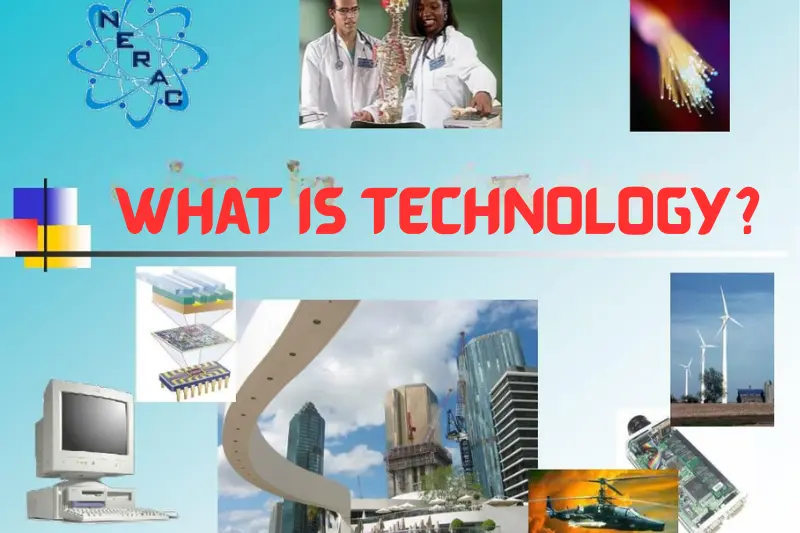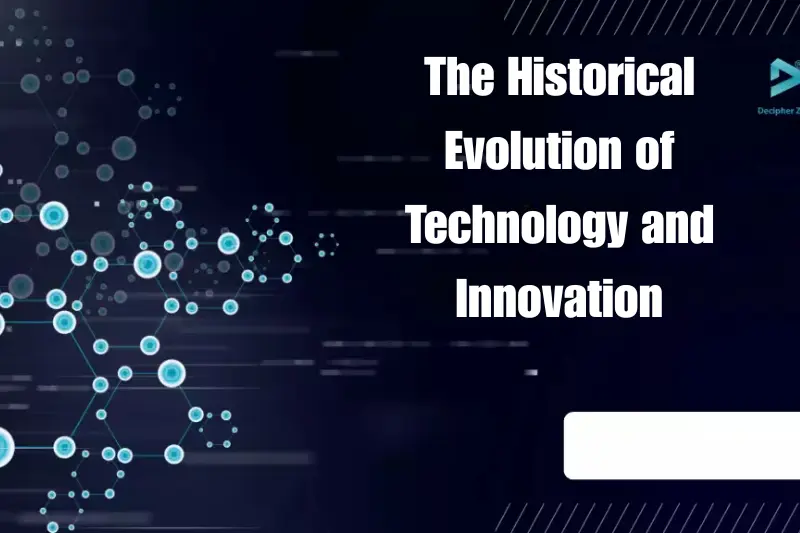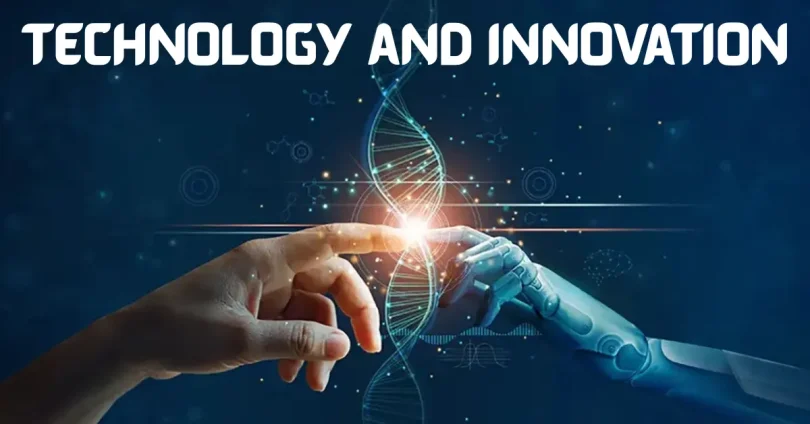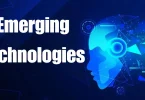Introduction
Since the dawn of humanity, technology and innovation have been inseparable from human evolution. From simple stone tools to sophisticated artificial intelligence systems, every major leap in civilization is closely tied to advancements in technology driven by the spirit of innovation. Today, in an era often referred to as the Fourth Industrial Revolution, the speed and scale of technological change are unprecedented, influencing every sector, every economy, and every individual life.
Understanding how technology and innovation shape our world is crucial to preparing for the future. In this article, we will explore the meaning of technology and innovation, their historical evolution, current applications, emerging trends, associated challenges, and their transformative potential.
What Is Technology?

At its core, technology refers to the collection of tools, machinery, systems, and processes designed to solve problems, improve human capabilities, and enhance the quality of life.
It includes both tangible products like smartphones and intangible assets like software programs or cloud platforms.
Examples of technology range from:
- The printing press (1440) — which revolutionized information dissemination.
- The steam engine (18th century) — which powered the Industrial Revolution.
- Modern computers and the internet — which have connected the world.
What Is Innovation?
Innovation is the process of translating new ideas into practical applications that deliver value.
Innovation is not limited to technological products; it also applies to processes, services, business models, and social systems.
There are different types of innovation:
- Incremental Innovation: Small, gradual improvements to existing products (e.g., better smartphone cameras).
- Disruptive Innovation: Radically changes industries (e.g., Netflix disrupting traditional cable TV).
- Radical Innovation: Completely new concepts that create new markets (e.g., the invention of the airplane).
Thus, technology and innovation together fuel not just new inventions but new ways of living and working.
You may also like to read this:
Latest Technology Trends In 2025 You Should Know About
Top 10 Tech Innovations Transforming Industries In 2025
The Future Of AI Technology: Opportunities & Challenges
How Emerging Technologies Are Shaping The Future Of Work
The Best Smart Fitness Equipment For Every Workout
Top Recovery Technology For Data Protection 2025
The Historical Evolution of Technology and Innovation

Ancient Times
- Stone Age: Early humans crafted tools from stones for hunting and survival.
- Agricultural Revolution: The domestication of plants and animals allowed humans to settle and build civilizations.
- Ancient Inventions: The wheel, writing systems, early metallurgy (bronze, iron) were transformative.
The Middle Ages
- Development of mechanical clocks, printing presses, navigation tools like the compass, and breakthroughs in architecture like Gothic cathedrals.
The Industrial Revolution (18th-19th centuries)
- Massive technological innovations like the steam engine, spinning jenny, and railroads transformed production, transportation, and urbanization.
The 20th Century
- Electricity, the automobile, the airplane, antibiotics, nuclear power, computers, and the internet reshaped global societies in ways never seen before.
The 21st Century
- Artificial Intelligence (AI), biotechnology, renewable energy, and space technology are leading humanity into a new age of interconnected, intelligent systems.
How Technology and Innovation Transform Industries
1. Healthcare
- Robotics in surgery, AI-driven diagnostics, wearable health tech (like smartwatches), personalized gene therapies, and telemedicine.
- Example: mRNA vaccines (like Pfizer-BioNTech COVID-19 vaccine) were rapidly developed using innovative technology platforms.
2. Education
- Online learning platforms (Coursera, Khan Academy), virtual reality classrooms, AI tutors providing personalized education.
- Example: During the COVID-19 pandemic, remote learning became the global norm, accelerated by digital innovations.
3. Business and Finance
- Fintech innovations like mobile payments (PayPal, Apple Pay), blockchain (cryptocurrencies like Bitcoin), and AI in customer service (chatbots).
- Example: Companies like Amazon use AI algorithms for inventory management, logistics optimization, and personalized shopping.
4. Transportation
- Electric vehicles (Tesla, Rivian), autonomous driving (Waymo), hyperloop concepts for ultra-fast transportation.
- Example: Uber and Lyft transformed urban mobility with on-demand ride-sharing models.
5. Communication and Media
- From landline telephones to 5G smartphones, from broadcast TV to streaming platforms (Netflix, Spotify).
- Example: Social media platforms (Instagram, TikTok) have become central to communication, marketing, and even activism.
6. Entertainment and Gaming
- Virtual reality (VR) headsets, augmented reality (AR) games (like Pokémon Go), AI-generated content (virtual influencers).
- Example: Metaverse projects (Meta, Roblox) aim to create immersive, interactive digital worlds.
Emerging Technologies Shaping the Future
Here are some future-defining technologies:
- Artificial Intelligence (AI): Machines that can think, reason, and make decisions (e.g., ChatGPT, autonomous cars).
- Internet of Things (IoT): Smart homes, cities, and industrial systems connected through the internet.
- 5G and Beyond: Ultra-fast, low-latency networks enabling everything from smart cars to telemedicine surgeries.
- Blockchain and Decentralized Finance (DeFi): New forms of secure transactions, decentralized apps, and digital assets.
- Quantum Computing: Solving complex problems (like drug discovery) faster than traditional computers ever could.
- Renewable Energy and Clean Tech: Solar panels, wind turbines, and battery technologies to combat climate change.
- Space Technology: Private companies like SpaceX working toward Mars colonization and space tourism.
Benefits of Technology and Innovation
- Increased Efficiency: Automation and AI streamline work processes.
- Global Connectivity: The internet and smartphones connect billions instantly.
- Healthcare Advances: Better diagnostics, treatments, and life expectancy.
- Economic Growth: Technology-driven sectors create new jobs and markets.
- Sustainability Solutions: Innovations offer greener alternatives in energy, food, and manufacturing.
Challenges and Risks
Even with incredible benefits, challenges persist:
- Job Displacement: Automation could replace millions of traditional jobs, especially in manufacturing and services.
- Privacy and Security Threats: Data breaches, surveillance, and cybercrime are serious risks in a connected world.
- Ethical Dilemmas: Should AI be allowed to make life-or-death decisions (e.g., autonomous weapons)?
- Digital Divide: Unequal access to technology worsens economic and educational gaps between regions and populations.
- Environmental Costs: E-waste, resource depletion, and energy consumption by tech companies need responsible management.
The Importance of Responsible Innovation
To maximize the benefits and minimize risks, societies must promote responsible innovation:
- Inclusive Design: Make technologies accessible to all.
- Sustainability Focus: Prioritize eco-friendly innovations.
- Ethical AI: Ensure transparency, fairness, and accountability.
- Policy and Regulation: Governments must establish laws that balance innovation with public interest.
Conclusion
Technology and innovation have always been at the heart of humanity’s greatest achievements — from the first fire to the internet to future colonies on Mars. They have the power to solve global challenges, unlock human potential, and redefine how we live and work.However, with great power comes great responsibility.
As technology continues to evolve at lightning speed, we must foster innovation that is ethical, inclusive, sustainable, and human-centered.
Only then can we ensure that technological progress creates a brighter, more equitable future for everyone on Earth — and beyond.
FAQs
1. What is technology?
Technology refers to tools, machines, systems, and processes created to solve problems or improve existing solutions.
2. What is innovation?
Innovation is the process of creating new ideas, methods, or products that bring significant improvement or change.
3. How are technology and innovation connected?
Technology often enables innovation by providing the tools needed to develop new ideas, while innovation drives the creation and better use of technology.
4. Why are technology and innovation important?
They improve daily life, boost economic growth, solve complex problems, and push society toward progress.
5. What are examples of modern technological innovations?
Artificial Intelligence (AI)
Electric vehicles
5G networks
Smart homes
Renewable energy solutions




